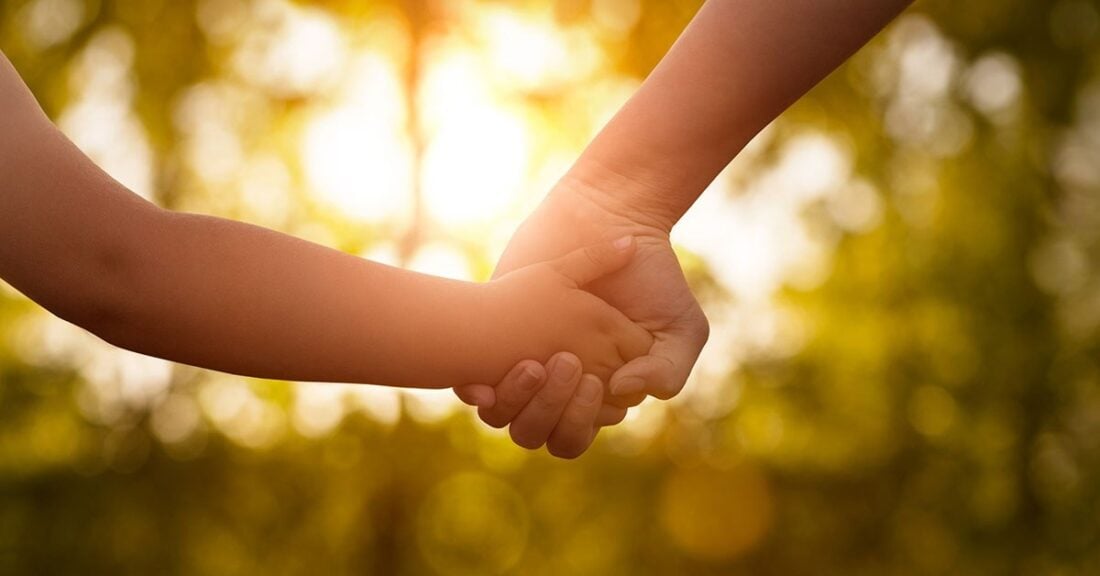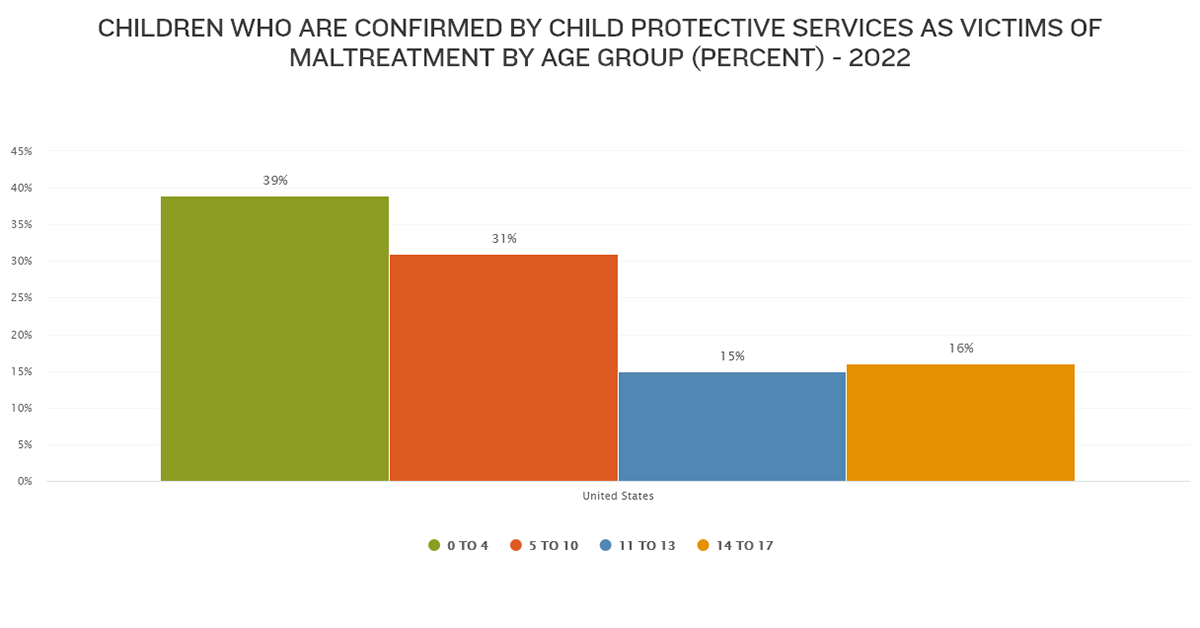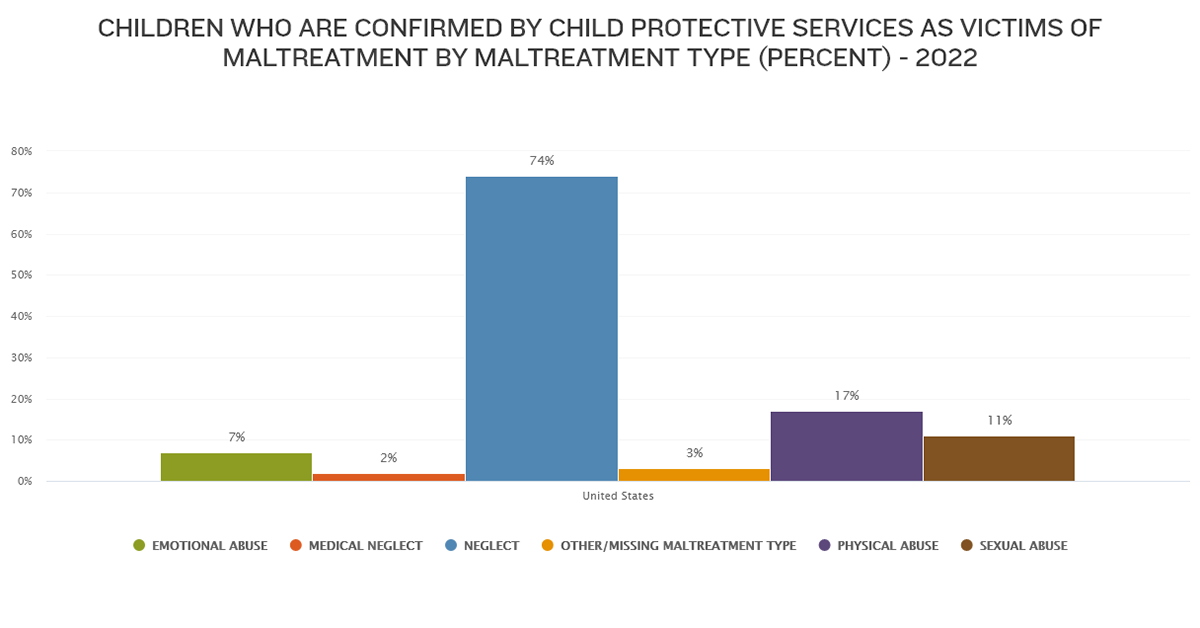Child Maltreatment Trends

What Is Child Maltreatment?
In the United States, the Child Abuse Prevention and Treatment Act defines child abuse or neglect, at a minimum, as any recent action or inaction by a parent or caretaker that results in a child experiencing:
- serious physical or emotional harm;
- sexual abuse or exploitation;
- sex trafficking;
- an imminent risk of serious harm; or
- death.
Beyond this federal definition, states have different policies for what is considered child maltreatment, how their child protective services department responds and what level of evidence is required to substantiate an allegation of maltreatment.
The terms “child maltreatment” and “child abuse and neglect” are often used interchangeably in studies and findings related to child maltreatment in the United States.
Mass General Brigham, the nation’s largest nonprofit hospital-based research enterprise in the United States, defines and describes the basic child maltreatment types. These are:
Neglect is any failure to provide for a child’s basic needs. In addition to physical needs — such as shelter, clothing, food and medical care — children also need an education as well as social and emotional care.
Physical abuse is any intentional aggressive or violent behavior toward a child that causes or could cause a physical injury. This type of maltreatment can include:
- slapping, hitting, punching;
- kicking;
- shaking;
- shoving; or
- burning.
Child sexual abuse spans any sexual experience involving a child due to the exploitation of adult power and authority. Physical contact is not required for child sexual abuse to have occurred.
Emotional abuse attacks a child’s basic emotional needs or consistently prevents such needs from being met. This type of maltreatment can include name-calling, chronic yelling and swearing, making excessive demands on performance, rejection, manipulation, withholding love and making threats. This type of abuse can leave children feeling unlovable, endangered, worthless, and flawed; it can also lead to anxiety, depression, withdrawal or aggressive behavior in children.
Child Maltreatment Statistics
The abuse or neglect of any child is a tragedy, and the encouraging news from the latest data in the KIDS COUNT® Data Center is that the annual number of confirmed child maltreatment victims in the United States decreased by almost 125,000 from 2015 to 2022. The rate of child maltreatment has remained steady for three consecutive years (2020−2022) at 8 confirmed victims for every 1,000 kids under age 18.
Young children continue to be at greatest risk of maltreatment. Of the more than 555,625 confirmed victims in 2022, 70% were between birth and age 10.

This data, which comes from the National Child Abuse and Neglect Data System, only includes children who came to the attention of authorities through reports of maltreatment, so the actual number of abused or neglected children may be higher.
By far, the most common type of child maltreatment is neglect — when a child’s basic needs are not met, such as food, housing, clothing, etc. — with 74% of victims experiencing neglect in 2022, similar to previous years. Neglect is often tied to the effects of poverty, making it a priority to strengthen and support families in need. At the same time, it is critical to recognize that poverty does not equal neglect and that the context in which families live, including presence of structural inequities and systemic racism, can greatly impact family well-being.
Other common types of maltreatment include physical abuse (17% in 2022), sexual abuse (11%), emotional abuse (7%) and medical neglect (2%).

State Trends in Child Maltreatment
In 2022, four states shared the lowest statewide child maltreatment rate, at two confirmed victims for every 1,000 children residing in the state. These four states were: New Jersey, Pennsylvania, Virginia and Washington.
Two states tied for the nation’s worst child maltreatment rates in 2022. Massachusetts and West Virginia both reported 16 confirmed victims for every 1,000 children residing statewide.
In line with the national trend, over half (27) of all states saw their child maltreatment rates fall from 2015 to 2022. Georgia and Kentucky reported the greatest improvements, going from 11 to 4 confirmed victims for every 1,000 children residing in Georgia and from 19 to 12 confirmed victims for every 1,000 children residing in Kentucky.
Other states saw this rate rise from 2015 to 2022. North Carolina fared the worst, with its child maltreatment rate moving from 3 to 10 confirmed victims for every 1,000 kids. Montana and Iowa were next in line for taking the largest jump in the wrong direction, going from 8 to 12 confirmed victims for every 1,000 children residing in Montana and 11 to 15 confirmed victims for every 1,000 children residing in Iowa.
States vary in their child welfare policies and practices, which is important to consider when interpreting these trends. Stakeholders can use this data to develop questions, give stakeholders a chance to use these different outcomes develop questions, compare strategies, identify areas of improvement and continue to track their state’s progress.
Consequences of Childhood Neglect and Abuse
Young survivors of maltreatment can experience both immediate and long-term physical, emotional and behavioral challenges. Children who have experienced maltreatment are more likely to suffer cognitive damage and memory issues and perform poorly in school when compared to their peers.
Research has also linked child abuse and neglect to:
- a rise in risky behavior;
- early pregnancy;
- feeling anxious or depressed; and
- excess weight gain.
The effects of child abuse and neglect, especially when chronic, can disrupt healthy development and result in lifelong effects on health, mental health and overall well-being. Maltreatment during childhood has been linked to:
- Elevated risk of substance misuse in adulthood. Young people who experience maltreatment of any kind are more likely to engage in smoking, drinking and drug use when they grow up.
- Rise in antisocial behavior, including violence perpetration and crime, in adulthood.
- Higher likelihood of having a psychiatric disorder or serious medical illness in adulthood.
- Lower economic productivity as adults.
Child Maltreatment Risk and Protective Factors
Researchers and leading organizations, including the World Health Organization, the Centers for Disease Control and Prevention and Mass General Brigham, have identified risk factors that increase — and protective factors that decrease — the likelihood of child abuse or neglect.
Parent and Caregiver Risk Factors
Examples of factors that increase the risk of a parent or caregiver engaging in child maltreatment include:
- Drug and alcohol use or abuse.
- Mental health problems or high parental stress.
- Having a child 4 years of age or under.
- Struggling to bond with a newborn.
- Caring for a child with special needs or disabilities.
- Learning that a child is LGBTQ+.
- Being a victim of childhood abuse or neglect.
- Living in poverty.
- Lacking social support.
- Being young, single, or having many children.
- Experiencing violence within the family.
- Being in a strained or high-conflict relationship.
Community and Society Risk Factors
Many factors in the community and across society can increase the likelihood of child maltreatment occurring, such as:
- Socioeconomic inequities.
- Gender inequities.
- Concentrated disadvantage, including a lack of access to basic goods and services, unstable housing and high rates of poverty and unemployment.
- Widespread availability of drugs and alcohol.
- High rates of crime and violence.
- Lack of community activities for young people.
Also important: Systemic racism can contribute to some of the risk factors above, including concentrated neighborhood disadvantage. Structural racism (as well as individual bias) also contributes to the overrepresentation of American Indian and Alaska Native and Black children in the child welfare system, according to research.
Parent and Caregiver Protective Factors
Among parents and caregivers, examples of key factors that can reduce the likelihood of child abuse or neglect include:
- Having strong social support.
- Having nurturing, positive relationships with kids.
- Being present and engaged with children.
Positive social support, in particular, is one of the strongest protective factors, according to research. Whether the support comes from a romantic partner, friends or family members, research shows that having a supportive social network can reduce the likelihood of child maltreatment and — importantly — reduce the likelihood of intergenerational abuse.
Community and Society Protective Factors
Additional factors at the community or society level can help protect against child maltreatment by providing families with more stable, supportive experiences and reducing parental stress. Among these factors:
- Policies that promote systemic equity by race or ethnicity, gender and geography.
- Policies that improve family financial security, such as paid parental leave, subsidized child care and strengthened tax credits and safety net benefits.
- Communities with access to basic services, including affordable and high-quality child care, housing, health care and mental health care.
- Neighborhoods with economic opportunities and activities for youth.
- Communities with social cohesion, such as trust and connections among neighbors.
Prevention of Child Maltreatment
Child maltreatment is preventable, and its effects can be mitigated with effective treatment and trauma-informed services.
Unfortunately, only half (50%) of child victims received services in 2022. This statistic fell 2 percentage points in just one year and represents a substantial number of children with have unmet needs.
The work of preventing abuse and neglect requires collaboration across multiple sectors to reduce risk factors and strengthen protective factors at the individual, family, community and societal levels. Increasingly, efforts to prevent child maltreatment are emphasizing protective factors in lieu of focusing on reducing risk factors. This solutions-oriented shift can help nurture both family strengths, supportive environments and positive outcomes for children and families.
Learn more about child maltreatment prevention.
When Families Are Struggling: A Shift Toward Supporting, Not Reporting
Child well-being experts have identified signs of child maltreatment, and while they recommend that adults report abuse or neglect to a trusted authority, they also caution that overreporting of suspected maltreatment is a problem. Unfortunately, families of color are more likely to be involved in the child welfare system due to overreporting. Nearly half of suspected maltreatment reports are screened out by child protective services (CPS) because they don’t meet the definition of abuse or neglect. Of the remaining reports that are investigated by CPS, only 16% are substantiated with evidence. When families are investigated by CPS, it can be a traumatic and harmful experience, which can exacerbate problems for families that may have been strained in the first place.
Given this, leaders are now promoting a cultural shift away from surveillance and overreporting and increasingly seeking to proactively support families in need. This work also involves pushing back against baseless stigmas and emphasizing that all parents need support sometimes, children are our shared responsibility, and it’s okay to ask for help.
More ways to support families include:
- Using “warmlines” or “helplines” as an alternative to CPS hotlines.
- Helping parents build social connections to reduce their sense of isolation.
- Aiding parents in accessing needed services or resources, such as financial, educational, mental health or other services.
- Advocating for policies and programs that benefit families.
Support for Children
Parents can connect and communicate with their children on a daily basis, provide emotional support and ensure adequate supervision. Adults, overall, can foster greater resiliency in kids by encouraging their sense of optimism, humor, confidence, independence, autonomy and creativity.
Caring, reliable and positive role models can also make a huge difference in a child’s ability to overcome maltreatment, according to research.
Support From Communities
Communities that provide good work opportunities and basic health and social services for parents can reduce the incidence of abuse. Also helpful: Safe places for children to go after school and access to economic support, if needed.
Employers can also adopt family-friendly policies, such as paid family leave, livable wages and flexible schedules.
Learn More About Child Maltreatment
See all child welfare data in the KIDS COUNT Data Center and read more about the Annie E. Casey Foundation’s work in child welfare.





